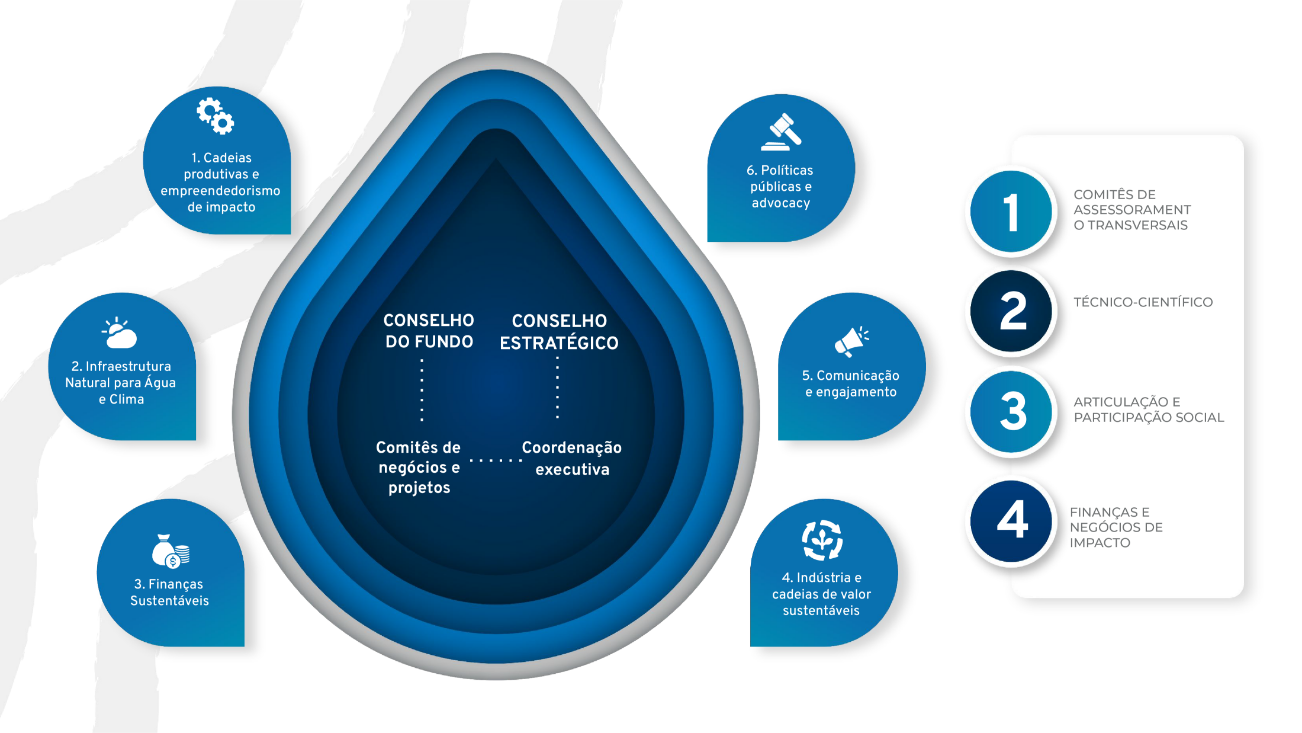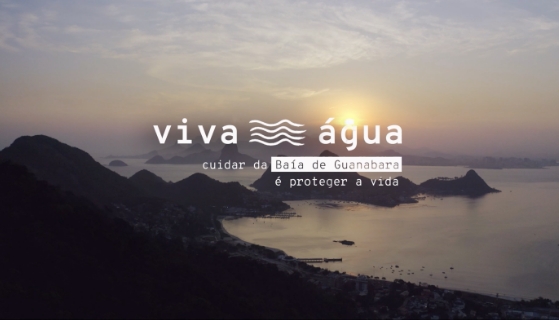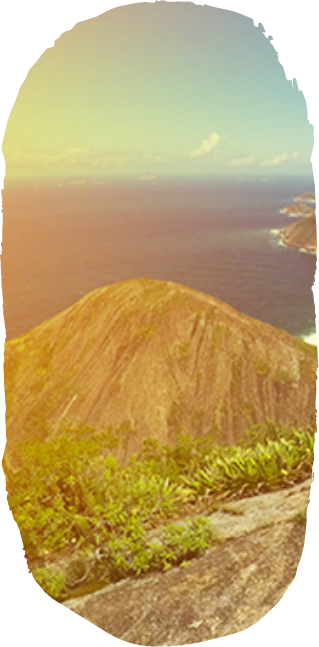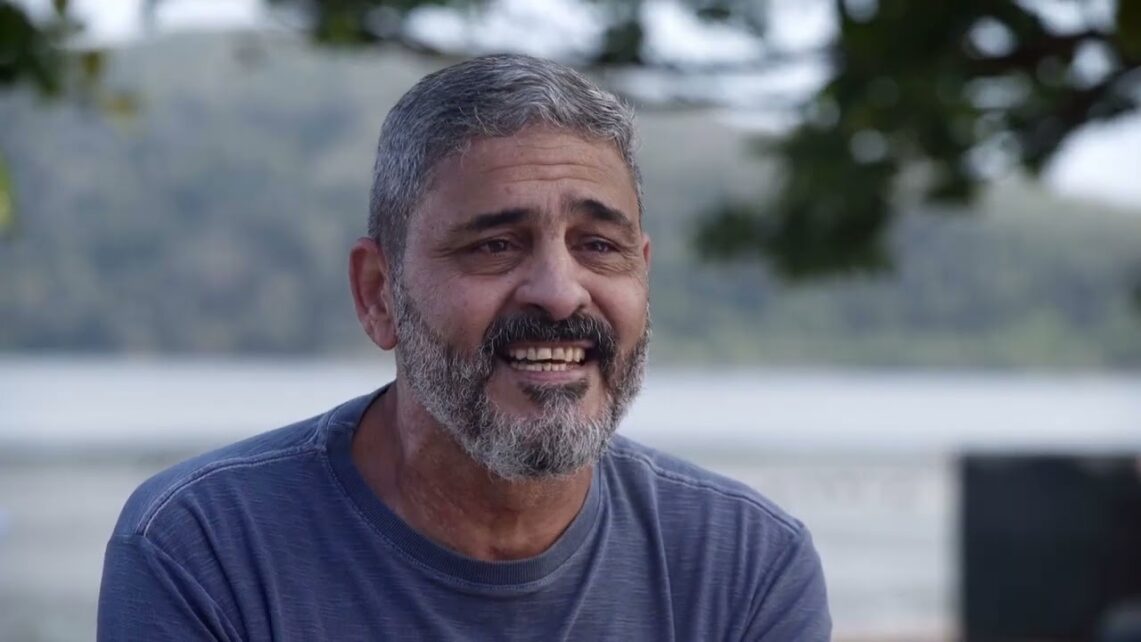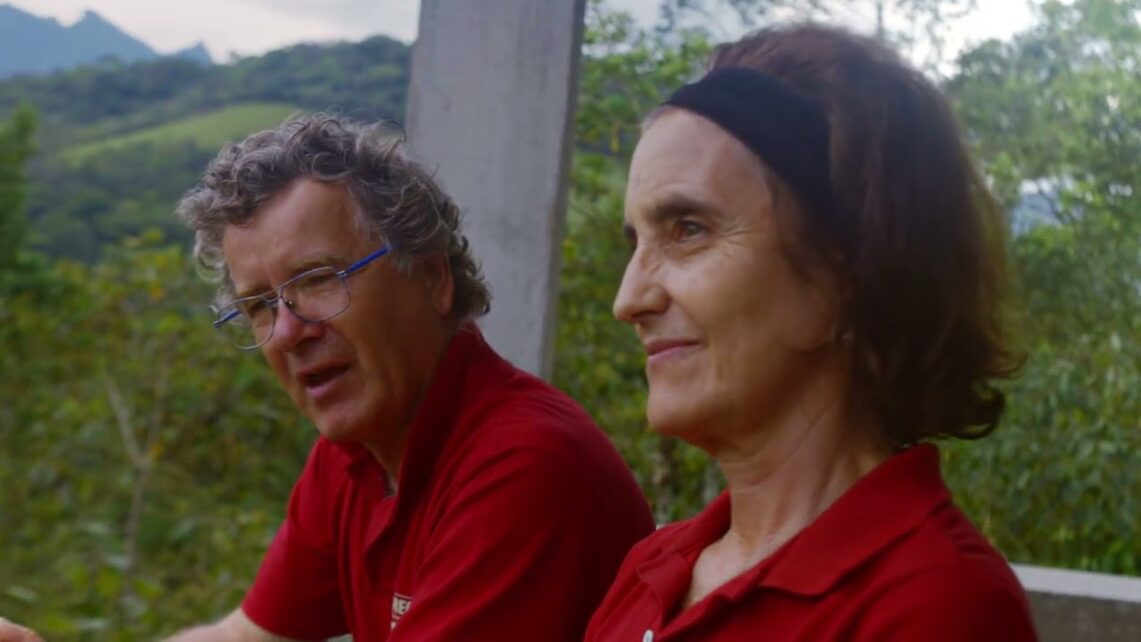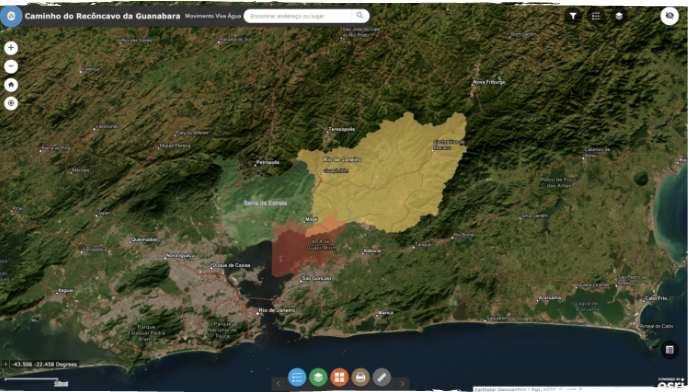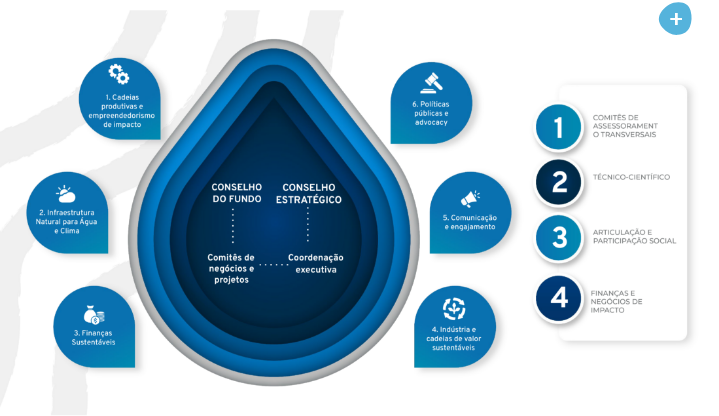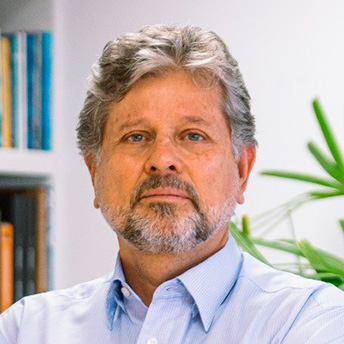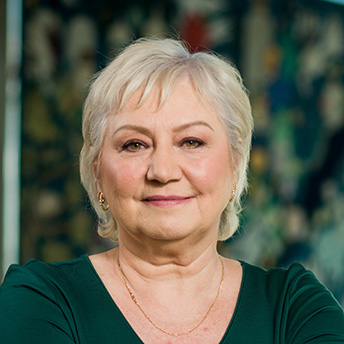GUANABARA BAY
Water is our guiding thread.
It is the symbol of life strength in Guanabara Bay.
Viva Água Guanabara Bay is a movement that involves multisectoral organizations with a single objective: strengthening water security and adaptive capacity for the entire Greater Rio de Janeiro. Supplying water with quality and in the right amount demands taking care of this resource as an asset. Our strategic action aims to prepare the region for the effects of climate changes, making the environment more resilient to them, in addition to nature conservation and regenerative economy.
This movement supports initiatives, socio-environmental projects and entrepreneurs from 17 municipalities that contribute to the conservation of natural areas such as forests, springs, rivers, lakes and mangroves. Moreover, it promotes sustainable management of ecosystems and improves sustainable production chains such as agriculture, fishing and responsible tourism in the Guanabara Bay hydrographic region.
GUANABARA BAY HYDROGRAPHIC REGION HAS:
117
conservation units
17
municipalities
81
supply sources are located in these conservation areas.

GUANABARA,
A BAY THAT KEEPS FIGHTING
If you want to go more deeply into the movement’s activities, follow the web series Guanabara: a bay that keeps fighting, produced by O Eco Association, sponsored by Boticário Group Foundation and supported by Viva Água.
The movement’s axes of action
According to the concept of the United Nations, water security exists when quality water is available in adequate quantity to serve human needs, allow economic activities, and conserve aquatic ecosystems, also considering an acceptable level of risk related to droughts and floods, and its four dimensions (Human, Economic, Ecosystem and Resilience) must be considered as guidelines for planning the supply and use of water in a country.
BASED ON THE DIMENSIONS OF WATER SECURITY, 6 STRATEGIC AXES WERE ESTABLISHED TO GUIDE WORK IN THE REGION.

NATURAL INFRASTRUCTURE FOR WATER AND CLIMATE
Actions
- Strengthening, implementing and expanding conservation units and surrounding areas.
- Expanding and restoring ecosystems to strengthen water security
- Climate change adaptation in vulnerable areas

PUBLIC POLICIES AND ADVOCACY
Actions
- Strengthening production chains, biodiversity conservation and impact businesses through public policies that support these subjects.
- Generating knowledge to support advocacy actions and decision-making processes
- Creating policies oriented toward well-being, innovation and local ecosystems that recognize initiatives with positive socio-environmental impact

SUSTAINABLE INDUSTRIES AND VALUE CHAINS
Actions
- Engaging the industrial sector by connecting sustainability, ESG and SDG agendas with the movement actions.
- Identifying and giving visibility to industry cases
- Turning the dependence the business sector has on biodiversity resources and other services provided by nature into an opportunity for nature conservation
- Engaging companies in strategies to conserve natural capital, which is critical to the longevity of their businesses
- Operational risk reduction
- Technological innovation in water management

COMMUNICATION TO RAISE SOCIETY AWARENESS
Actions
- Implementing institutional communication (strengthen the movement).
- Providing opportunities for content production with a positive agenda
- Giving visibility to positive actions, showing that Guanabara Bay restoration is possible, raising society awareness for a change of opinion and behavior
- Strengthening the movement and showing the opportunities that the region offers for economic, social and environmental development

SOCIO-BIODIVERSITY PRODUCTION CHAINS AND IMPACT BUSINESSES
Actions
- Structuring and strengthening regional production chains
- Developing strengthening/technical assistance programs
- Strengthening the business ecosystem
Productive chains involved
- Sustainable agriculture, fishing, tourism and socio-biodiversity chains
- Protected areas and businesses
- Market, commercialization and value addition
- Ecological restoration chains

SUSTAINABLE FINANCE
Actions
- Implementing financial mechanisms that enable financing for projects, businesses and actions to strengthen the impact business ecosystem
- Developing strategies to promote structuring capital, blended finance and venture philanthropy
- Using financial mechanisms for tactical actions
- In addition to these actions, our goals are:
Operating a philanthropic fund with territorial impact for the Guanabara Bay hydrographic region, conducting credit operations (collective and individual) for businesses and donation operations for projects.
The Viva Água Guanabara Bay movement is able to expand its results through strategic connections, articulations, a 360º systemic view, and gathering of resources and people.
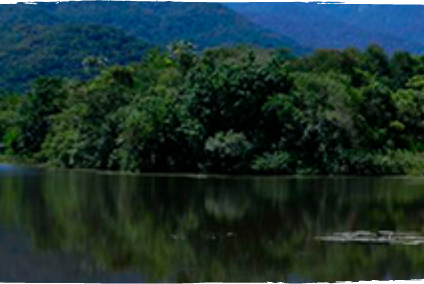

WALK THROUGH TIMELINE WITH US AND LEARN ABOUT OUR HISTORY

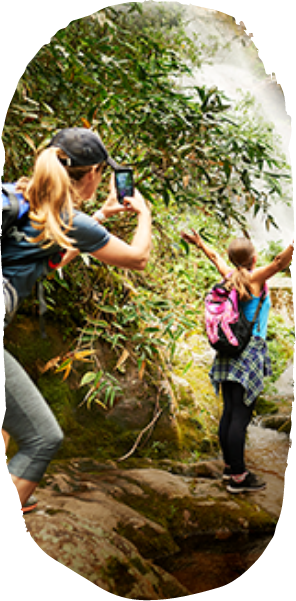

Discover some of the movement’s initiatives that make a difference in the daily life of our waters
COUNCIL OF WATERS
In 2022, we launched an open innovation laboratory, led by Sistema B Brasil, Firjan, Zebu Mídias, Boticário Group Foundation and Trê-Investindo com Causa, to involve the private sector in the sustainability movement. This lab aims to promote pre-competitive collaboration between entrepreneurs to address structural challenges.
Initially, we focused our efforts on connecting companies in a priority bioregion (Guapi-Macacu bioregion). Three companies, Vide Verde, Coco Legal and Action Gestão Ambiental, participated in the pilot. Now, we are expanding this initiative to all Viva Água bioregions.
THE LABORATORY HAS 3 DEVELOPMENT PHASES:
- Analyzing operation policies, using tools to measure
their impact - Exchanging good practices that collectively support
one another to create sustainable solutions - Cooperating and co-investing in favor of the development
of their chains
ENTREPRENEURIAL NATURE PROGRAM (ENP)

This program aims to accelerate businesses with a positive socio-environmental impact that are relevant in the Guanabara Bay hydrographic region.
Since the launching of ENP, 26 businesses have been accelerated through specific consultancy and collective and individual mentoring.
The three finalists in each of the two editions received a financial award.
VIVA ÁGUA LAB
The laboratory is an edition of the web of solutions, which included the participation of civil society in the search of innovative solutions for the ecological restoration of the region. The process supports rural producers, fishermen, artisans, researchers, environmentalists and entrepreneurs interested in developing sustainable production chains, such as responsible tourism, meliponiculture and agroecology, promoting the restoration of local ecosystems.
At the end of the laboratory’s last edition, three outstanding initiatives were selected to receive financial support. They are:

Mangue Doce
The project aims to improve socio-biodiversity in the mangroves of the Guapi-Mirim environmental protection area (APA), São Gonçalo, acting to restore the ecosystem and generate income through honey production, involving the community in three areas: ecological restoration, training in meliponiculture, and environmental education. The initiative by the Guardians of the Sea Institution involves the planting of 2,500 seedlings of native species, in addition to the creation of a beekeeping cooperative to generate income for fishermen and local residents.
Community Trail for Nature Restoration
Initiative that seeks to develop a community ecotourism trail in the region known as Baixada Verde to boost the local economy and restore the forest and biodiversity. The trail project was developed by Sinal do Vale Institute and promotes regeneration and training for native seedling nurseries, in addition to demonstrative agroforests.
Zip Flor
This project was developed by Tecnoarte Institute and aims to implement a replicable model for restoring riparian forests and springs, with agroforestry and assisted restoration. It also includes income generation, environmental education and ecotourism and is focused on areas close to the Serra dos Órgãos National Park and the Três Picos State Park.
LEARN MORE ABOUT THE MOVEMENT’S GOVERNANCE
The governance of the Viva Água Guanabara Bay movement is divided into three levels with different responsible fronts. This development chain results in technical-scientific, social articulation and participation, and finance and impact business committees.
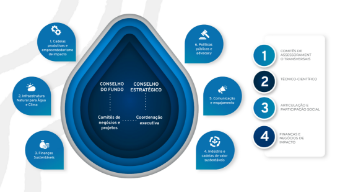 see more
see more 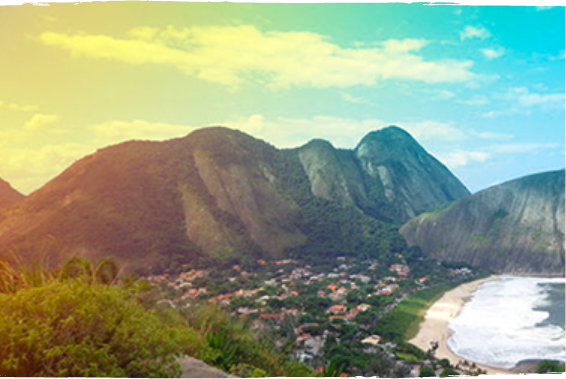
Viva ÁGUA FUND
Aiming at boosting the movement’s actions and strengthening the business ecosystem with positive socio-environmental impact, the Boticário Group Foundation in partnership with Humanize Institute and IDG created a philanthropic fund. With the financial management of Trê-Investindo com Causa, the fund should direct donations and loans to socio-environmental projects and businesses, also strengthening acceleration programs and training local entrepreneurs.
HOW TO PARTICIPATE
Any public or private sector organization can participate in the Viva Água Guanabara and contribute to sustainable entrepreneurship, water security, and climate change resilience.
Forms of participation
Strategic Investor: Strategic Investor enables the movement’s actions through contributions to the Viva Água Philanthropic Fund. This investor has the right to participate in the strategic council, subject to conditions of compliance with the movement’s governance policy.
Network of impact: Any public or private organization that engages in the movement’s thematic agenda.
Click here and learn about the governance policy of the Viva Água movement.
learn moreWAYS TO ACCESS THE PHILANTHROPIC FUND
The Viva Água Guanabara Bay movement has a philanthropic fund that aims to support impact projects and businesses in the territory. Companies, social organizations, cooperatives or other kinds of association can present business initiatives or projects that contribute to sustainable entrepreneurship, water security and climate change resilience.
Learn about our submission policies and register your initiative or business at the links below:

Participation Form
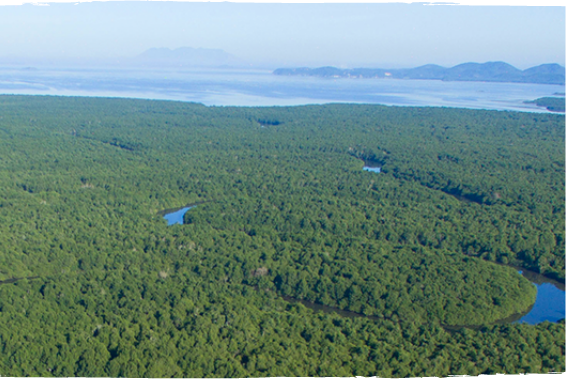
WHO TURNS THE MOVEMENT INTO REALITY
The Viva Água Guanabara Bay comes to life through the connection of different institutions and organizations that work together to create a positive impact on the environment, society and the regional economy. It counts on the participation of public authorities, private initiative, the community, cooperatives, universities, unions, business entities, and international organizations.
IDEALIZATION
REALIZATION
NETWORK OF IMPACT
PHILANTHROPIC FUND MANAGED BY
